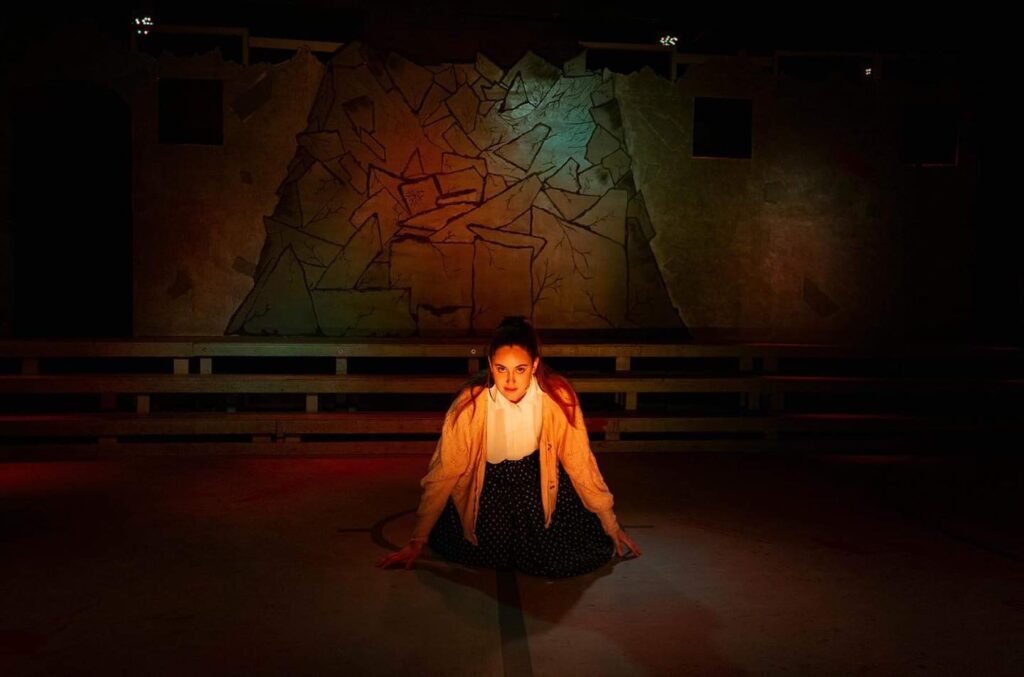
‘Carrie: The Musical’ // Phoenix Ensemble
‘Carrie: The Musical’ was bittersweet.
The Pavilion Theatre (affectionately known as the “Tin Shed”) received a bloody makeover for Phoenix Ensemble’s ‘Carrie: The Musical’. This production delivered the familiar thrills, chills and telekinetic teen revenge, but some elements might leave audiences wanting more.
Based on Stephen King’s novel and inspired by the film adaptation, ‘Carrie: The Musical’ focuses on Carrie White, a lonely and misunderstood teenager with an oppressive religion-crazed mother, who soon discovers she has telekinetic powers after being bullied throughout high school. Senior prom then pushes Carrie over the edge, when a bucket of pig blood is dumped over her head.
Despite the musical’s strong music and compelling storyline, the 1988 Broadway production closed after a mere five public performances. However, the show’s infamy due to its limited run earned it a cult following inspiring revivals and quickly seeing the rights released for licensing.
In Phoenix Ensemble’s production, the Tin Shed utilised many different lighting elements throughout the performance. As well as standard lighting fixtures, there were four LED stage lights on the far back wall of the stage behind four window cutouts, and strip lighting on the very edge of the stage to illuminate the cast from the floor.
Designed by Maddy Bosanko, lighting choices were simple and mostly effective, but some moments appeared dark. Highlights of the design included the use of the four lights at the back, which were turned off as Carrie telekinetically closed each window. This was an effective substitution since there were no shutters and indicated clearly the action. Another nice moment was when these lights then slowly became red as Carrie approached her mother at the end of Act One. In a different scene, where the entire cast onstage and staring deep into the crowd, dark blue lighting was cast on them. This may have benefited from more light on stage.
During the climax of the show, the destruction left a lot to be desired and not many lighting elements were used. A notable choice was a cut-out of wings on the back wall that was revealed when light was shone through them. Operator Riley Baker, unfortunately, missed the mark at times with the lighting, and the some choices during this pivotal scene lowered the overall effect.
Sound was designed and operated by Jacob Cash; but levels were somewhat inconsistent throughout the performance. With the amount of screaming and shouting throughout the show, this element required more consideration. Microphones were generally really low, but were gradually turned up as the cast was speaking on stage. At times, the audience lost the beginning phrases at the start of several scenes.
During moments when the cast continued to converse on stage silently, the audience could hear breathing, whispering, and lip-smacking. It also seemed odd that almost all the cast were mic’d except for a few cast members. Although there appeared to be an overhead ensemble microphone, the choice to mic everyone may have made more sense. Sound effects that dependent on lighting and cast were sometimes out of sync, which also impacted the overall effect. As it was opening night, hopefully these slight technical issues will be rectified as the season progresses.
The one thing Phoenix Ensemble never fails to surprise audiences with is a completel transformation of the stage and theatre space, with set design attributed to Joshua Brandon, Harley Roy, Isaac Tibbs, and Breanna Gear. The proscenium arch and the inside of the door to the theatre were also decorated to appear flush with the set and the stage, with featured pipes and an air exhaust. This was constructed and decorated with what appeared to be fiberboard, which gradually became more distressed from the floor up to the top of the proscenium arch.
The floor of the stage was made to look like a gymnasium with stairs at the back that lead up to a raised L-shaped platform. This wrapped around the back and hugged the left side of the stage, which also had another set of stairs that led back down to the floor. The left side of the platform also had a door that led from backstage onto the raised section. This doorway was decorated with crosses and depictions of Jesus, which was dually used as the closet Carrie gets forced into and as the front door of the White residence. The back of the raised platform had a wall that featured a semi-two-dimensional painting of a collapsed wall with four window cutouts, two on each side.
During “The Destruction” there were set pieces that broke and collapsed in front of the audience’s eyes which was effective. A set of lockers on the right side of the stage, although not used during the show, fell slightly forward during the destruction, with pipes and the air exhaust also breaking during this moment. It’s a shame the “collapsed wall” wasn’t concealed during the show, as it was a bit of an eyesore leading up to that moment. The whole set was also decorated with bloody handprints and blood stains which also felt unnecessary as the murder and destruction doesn’t appear until the end of the show.
Props were kept to a minimum in this production. There were decorative pieces like a biscuit tin with sewing items and candles, and a few props used were a Bible, bowls and spoons, a volleyball, brightly coloured period products, a digital camera. There was a flip phone, which didn’t seem appropriate to the era of the script.
Costumes for the main cast were well done for each of the characters. For example, Carrie and her mother wore conservative clothing, Sue was mostly seen in a summer dress and a denim jacket, and Chris wore a short shirt and skirt with a cropped overshirt. The ensemble attire where the overall vision became muddled with looks that ranging from 1980s to now. With the mix of different appearances, it wasn’t clear which era this performance was set in.
Joshua Brandon directed ‘Carrie: The Musical’, with assistance from Ashleigh Cates. In the director’s notes, Brandon stated that this production of ‘Carrie: The Musical’ is set in 2009. As the script wasn’t changed to accommodate this, much of the language used still felt very 80s. It wasn’t clear why ‘2009’ was specifically chosen by Brandon, as the book was released in the late 70s, along with the first movie, followed by two more remakes in 2002 and 2013. Brandon specified in the notes that he wanted this production to reflect the current state of the world, however, a more recent date like 2013 – in line with the most recent movie – or closer to the present day may have been more purposeful.
Another choice made by the directorial team was to have the ensemble and backstage team share the work bringing in and out set pieces. This could have worked well, but it was mostly uncoordinated and distracting. Additionally, the backstage crew dressed were dressed in ’90s punk-inspired blacks; this included sheer tops and visible jewellery, which added to the era confusion.
The ‘Tin Shed’ is notoriously known for being a tight space to work with, however, some of the ensemble moments could have been better managed. During “Do Me a Favor”, ensemble members onstage were distracting and the overall mood of the song was affected. During Sue’s interrogation, the ensemble was seen entering the stage, which could been more forgiving if all the entries onto the stage were used to disperse the flow of traffic. During “The Destruction”, the ensemble-heavy cast was tasked with convincing the audience that Carrie was telekinetically controlling them all and throwing them around the stage. This entire moment felt rushed, as most characters died simultaneously.
Musical Direction by Hayley Marsh ensured a nice mix of simple and complex harmonies, with the most complex being the opening song “In”, which sets the tone for the entire show. Although it appeared to have been taught well, it seemed that a bit more time was needed to strengthen and bring elements together. There were moments in ensemble-heavy songs where unanimous breathing was not at the end of phrases which made for some odd-sounding moments. It also seemed that in some songs there were a few members of the ensemble who were not completely confident with their harmonies, this unfortunately threw off other members and muddied the overall sound.
Victoria Lancaster and assistant Hannah Macri were the duos behind the choreography. From the opening song, it was clear that there was not enough space for the entire cast to dance. “In” was very cramped while the entire cast was dancing; some cast members couldn’t even extend their limbs without colliding with other members. Almost all the choreographic moments in the show seemed to be disconnected to the content of the show. Two moments when choreography and choreographed movement seemed to work well was during the prom and for Ms. Gardner in “Unsuspecting Hearts”.
Chelsea Sales played the iconic Carrie White and blew the audience away with her vocal and acting talent. The audience could see every thought, sympathise with every moment, and feel every emotion. Like Carrie, Sales is an incredible force that should not be messed with.
Margaret White was portrayed by Carly Quinn, and it was clear that Quinn has a strong background in singing, working very well with her counterpart. Audiences could see the moments when she had power over Carrie and the moments when she feared for her child, thus Quinn gave a compelling performance.
In ‘Carrie: The Musical’ there are two couples: Sue Snell and Tommy Ross are compassionate and sympathetic as they try to make things right with Carrie, while Chris Hargensen and Billy Nolan are malicious and ambitious as they try to get revenge when Carrie unintentionally got Chris banned from the Senior Prom.
Sophie Mason and Kyle Armstrong played Sue and Tommy and Storm Fraser and Macca Kelly as Chris and Billy; the two couples showcased great chemistry together. Mason and Armstrong both had great vocal prowess and complimented each other well.
Two ensemble standouts were Dana Summer as Norma and Dugald Lowis as George. Summer was a comedic joy to watch in the background of the action, especially with her objective to pursue the teacher Mr. Stephens. What Lowis didn’t have in spoken word, they made up for in their physicality. Lowis lifted every moment they were in by the charisma they exuded on stage.
‘Carrie: The Musical’ is a cult classic and is an iconic part of pop culture today. Although some directorial and choreographic choices seemed unclear, the production team, along with a stellar leading cast have shown the audience “A Night We’ll Never Forget”.
‘Carrie: The Musical’ performs until Saturday, 25 May 2024 at The Pavilion Theatre. For more information visit Phoenix Ensemble’s website.
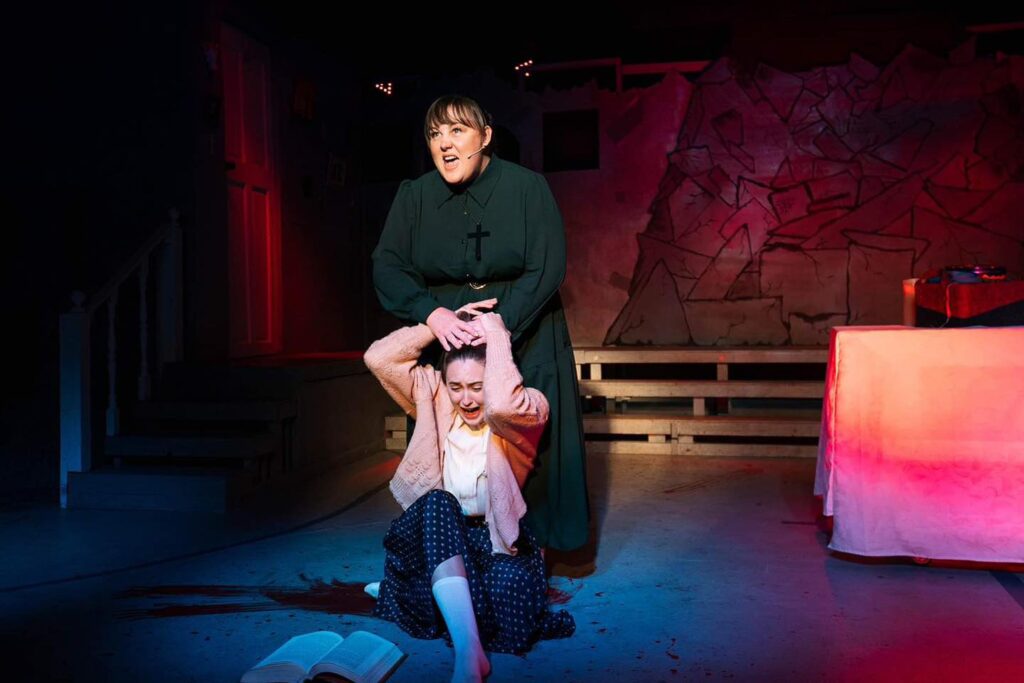
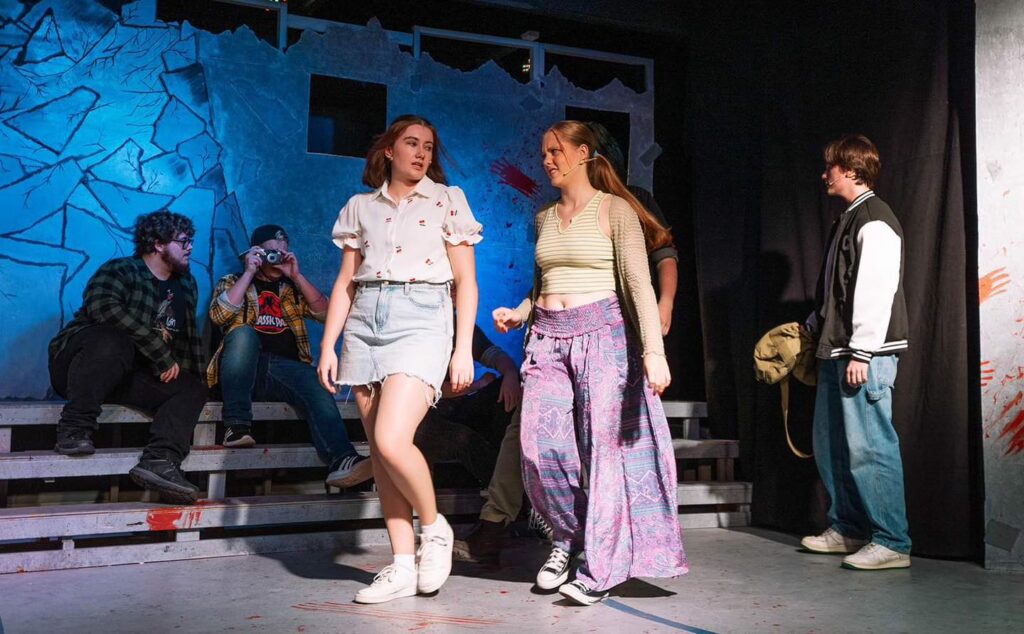
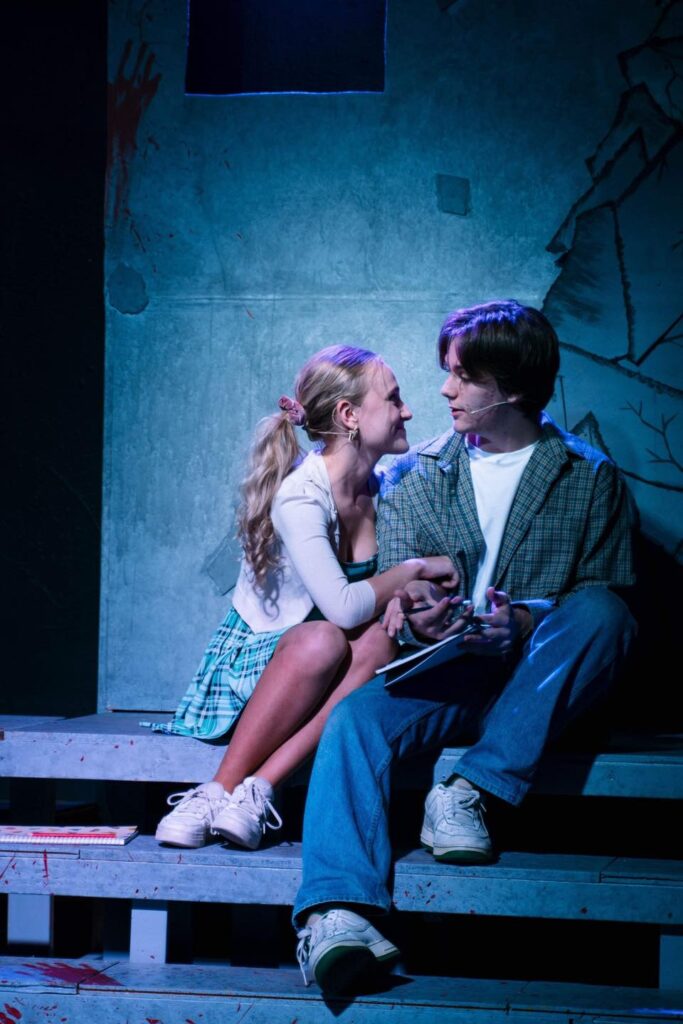






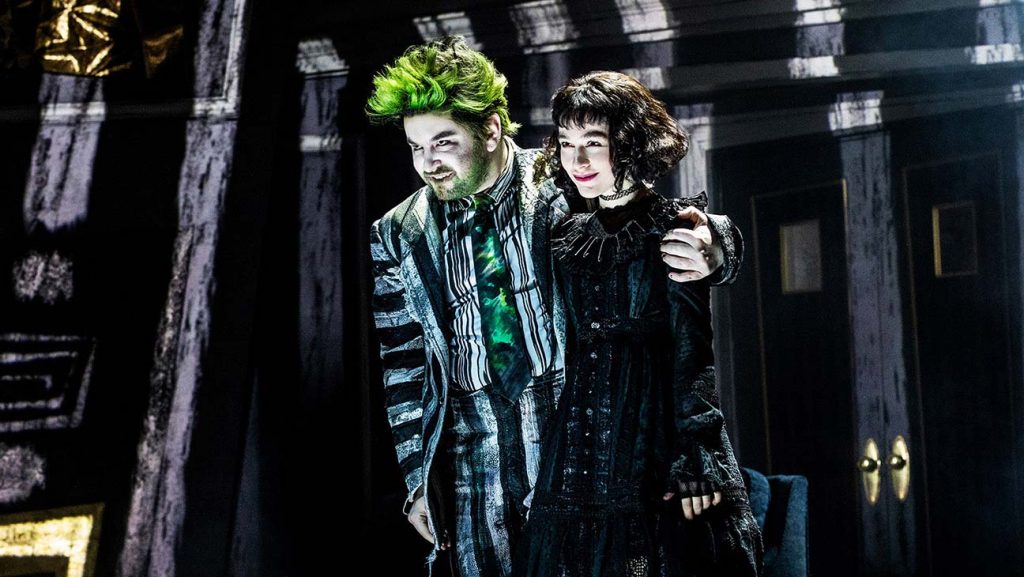
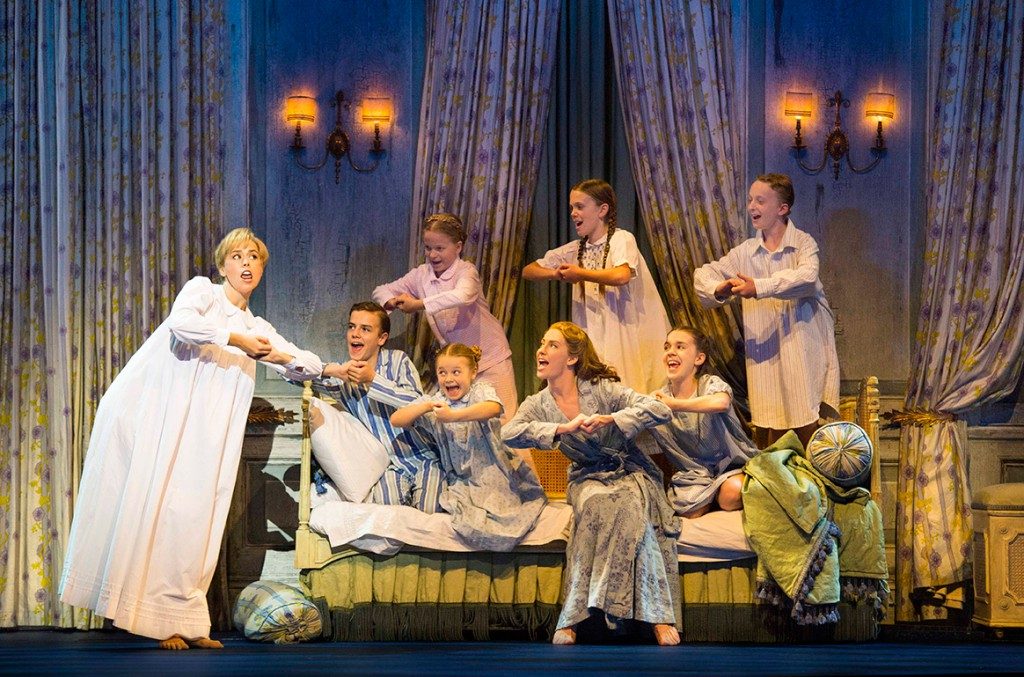
Wow. I can’t believe what I just read.
No “overhead ensemble mics” were harmed in the making of this production
Was the reviewer in a bad mood when watching the show? This review is unnecessarily harsh. I have attended the same performance and some of these word choices are definitely unnecessary for this bunch of creatives that does this for free.
Theatre Haus let’s remember that this is community theatre with the emphasis on community. You are 100 percent entitled to your opinion on what you see on stage, but what you failed to see is the months of hard work it takes to put on a production. From the creative team and cast to the amazing lighting and sound operators that give their time for no pay, but do it for the love of theatre. I think somewhere within the lines of this review you lost sight of the dedication that the cast, crew and creatives gave to make Carrie at Phoenix Ensemble hit the stage.
I went and loved it!
Just a reminder it’s community theatre, unpaid creatives who do it for FUN.